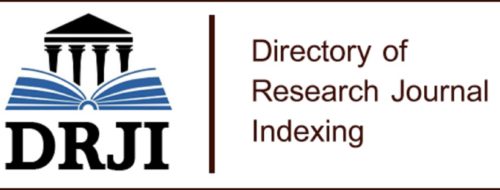Water needs of the white corn crop using the drainage lysimeter
Keywords:
water needs, drainage, humidity, cultivationAbstract
The purpose of this work is to estimate the water needs of the white corn crop using the drainage lysimeter, to improve the efficiency of water use. The water needs of crops are related to various factors, among them is the climate, and water waste, in addition to the state of the development phases of the crop; since all these components make it easier to conserve moisture in the root system of plants. And it is for this reason that it is important to know the crop coefficient (Kc) is an important parameter for management, programming, since the extraction of water varies from one period to another. Through the use of the drainage lysimeter, the purpose of this research was to obtain results with a higher degree of reliability with regard to water management, and in turn will benefit producers where they will obtain greater profitability that encourages them to produce, in order to optimize the agricultural economy.
Keywords: water needs, drainage, humidity, cultivation.
Downloads
References
Cohen, S., Ianetz, A., Stanhill, G. 2002. Evaporative climate at Bet Dagan, Israel, 1964-1998. Agricultural and Forest Meteorology. 111:83- 91.
FAO. (2015). Food Outlook, Biannual report on global food markets. Food and Agriculture Organization of the United Nations, Rome. https://doi.org/http://www.fao.org/docrep/018/al999e/al999e.pdf
FAO (Organización de las Naciones Unidas para la Alimentación y la Agricultura). (s. f.). Diseño de métodos de riego, 39-53. Recuperado de http://www.fao.org/tempref/GI/Reserved/FTP_FaoRlc/old/prior/recnat/pdf/MR_cap3.PDF
FAO, (Organización de las Naciones Unidas para la Alimentación y la Agricultura). (1997). El maíz Blanco: Un Grano Alimentario, 22.
GARAY, O. 2009. Manual de uso consuntivo del agua para los principales cultivos de los Andes Centrales Peruanos. p. 3-19.
Guayanay, F. (2019). Determinación del requerimiento hídrico de cultivos de maíz amarillo duro (Zea mays L.), Var. Tusilia, mediante el método del lisímetro volumétrico, en el sector San José, perteneciente al sistema de riego Campana - Malacatos. Universidad Nacional de Loja. Facultad Agropecuaria y de Recursos Naturales Renovables. Carrera de Ingeniería Agronómica. Loja- Ecuador.
Ibáñez, C. (2016). Determinación del coeficiente de cultivo (Kc.), para maíz (Zea mays L.) bajo invernadero en la Granja Santa Inés. Tesis de la universidad de Machala. Unidad académica de ciencias agropecuarias carrera de ingeniería agronómica.
INEC (Instituto Nacional de Estadística y Censos). (2017). Módulo de tecnificación Agropecuaria ESPAC 2017. Recuperado de http://www.ecuadorencifras.gob.ec/documentos/web-inec/Encuestas_Ambientales/Informacion_ambiental_en_la_agricultura/2017/DOC_TEC_AGRO.pdf
Mossande, A., Oscar, B., & Mujica, A. (2015). Requerimientos hídricos del tomate en el valle de Cavaco en Benguela, Angola. Revista Ciencias Técnicas Agropecuarias, 5-10.
Ureña, G. (2017). Determinación de las necesidades hídricas del cultivo de maíz (Zea mays), mediante el lisímetro volumétrico, en el sector el porvenir perteneciente al sistema de riego Campana-Malacatos. Universidad Nacional de Loja
Yanangómez, L. (2018). Evaluación del requerimiento hídrico del cultivo de maíz morado (Zea mays l.) en la parroquia Malacatos sector “San José”. Universidad Nacional De Loja Facultad Agropecuaria Y De Recursos Naturales Renovables Carrera De Ingeniería Agrícola.
Rana, G. y Katerji, N. (2000). Measurement and estimation of actual evapotranspiration in the field under Mediterranean climate: a review, European Journal of Agronomy. 13:125–153.
Published
How to Cite
Issue
Section
License
Copyright (c) 2021 Revista de Ciencias Agropecuarias ALLPA. ISSN: 2600-5883.

This work is licensed under a Creative Commons Attribution-NonCommercial-ShareAlike 4.0 International License.


.jpg)










